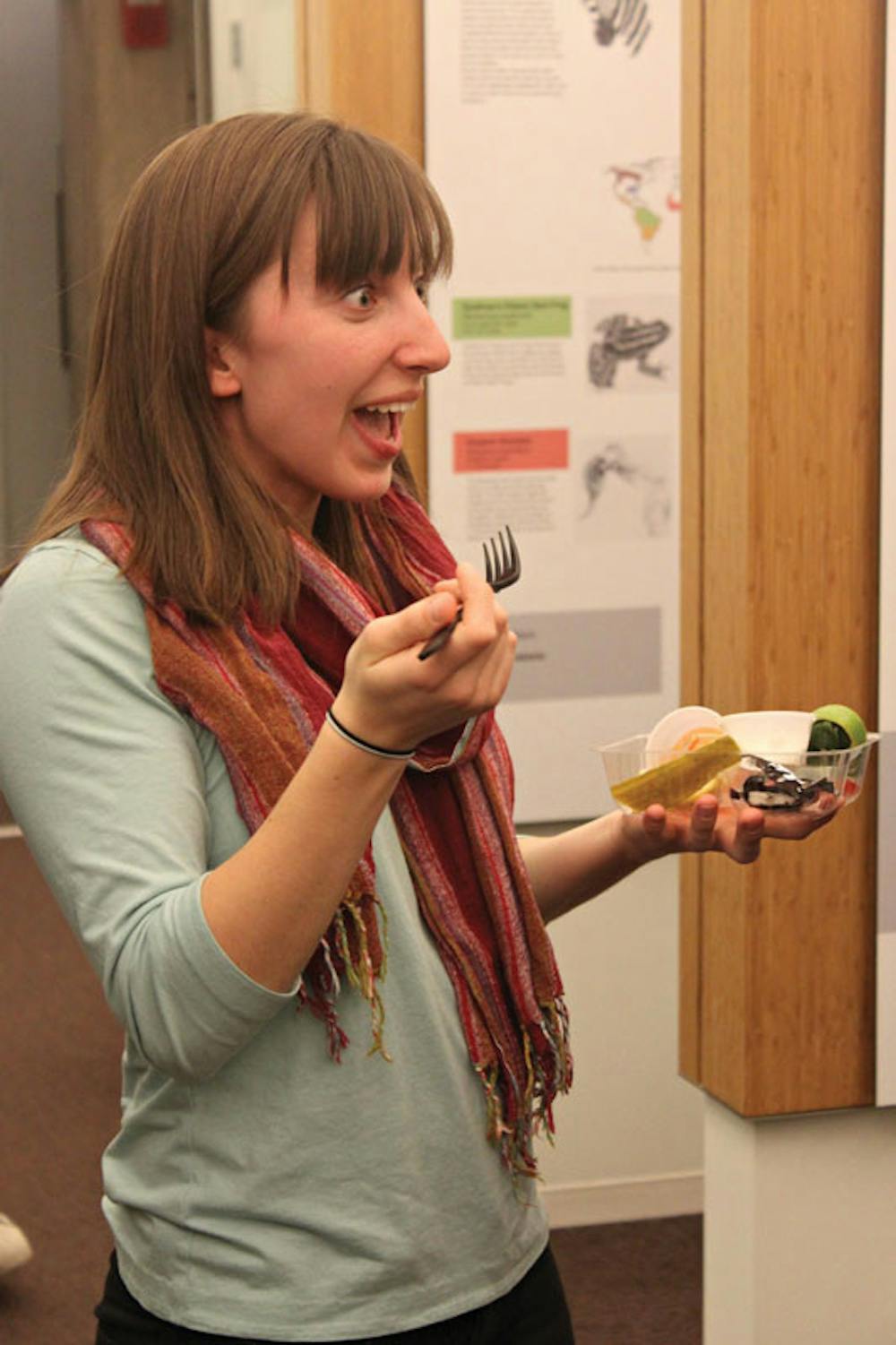A room full of students gobbled down lemon wedges yesterday in celebration of the Science Center’s third anniversary. But it wasn’t a sour experience — the students had just sampled “miracle berries,” which make acidic food taste sweet.
This is the second year in a row the Science Center has celebrated its “birthday” in this way, said Jodie Gill, Science Center program coordinator.
Upon entering the event, students were provided with a plastic tray holding two items: a lemon wedge and a large, red berry. This was the miracle fruit, or synsepalum dulcificum, which originated in Africa.
John Stein PhD’95, senior lecturer of neuroscience, presented the science behind the taste-twisting experience to the 40 to 50 students who attended the event. “Mammals have five senses: sweet, sour, bitter, salty and umami — the Japanese word for ‘delicious flavor’,” he said, adding that the miracle berry “messes around with your perception of sweet.”
The chemical responsible for the fruit’s sensory-altering effects is miraculin, a glycoprotein that changes the structure of cell receptors that communicate sweet taste to the brain, Stein said.
Humans taste sweetness when “sucrose binds to receptors on your tongue, activating a messenger system” that releases a neurotransmitter to the brain through a biochemical cascade, Stein said.
But the miraculin in “miracle berries” binds to these sweet receptors, making them activate in response to acids, triggering the brain’s sense of sweet, he said.
Stein asked for two volunteers from the audience to participate in a blindfolded taste test. He instructed them to “mash the berry around on (their) tongue, resisting the temptation to swallow the juice,” and he invited the audience to do the same. Afterward, the students were fed an unidentified food item. One of the students correctly guessed that she had been fed plain yogurt, but said it tasted “like vanilla yogurt without the vanilla.” The other student guessed she was eating cream cheese.
Students generally reacted with pleasant surprise to the sweet taste of the lemon and continued to sample various acidic foods, such as plain cranberry juice, pickles, tomatoes and vinegar, which were laid out at different tables around the Science Center.
“In the past when we’ve done this, we’ve just given everyone a tray with all the foods on it,” Gill said. “But I think it definitely adds to the experience to have people walk around and bounce ideas off of each other.”
Many students reacted positively to eating the berry.
“It’s flavor-inverting,” Lucas Eggers ’13 said. “I can still taste the vinegar and hot sauce in the back of my throat, but on my tongue it tastes like it’s wrapped in sugar. There’s a lot of cognitive dissonance going on, and it’s crazy.”
“It was funny how fast I got used (to) it,” Jordan Beck ’14 said. “I was just sitting there eating my lemon, and then I realized, ‘Wait, I don’t normally eat lemons!’ But it tasted like lemon candy, and it was delicious.”
Both Stein and Gill said they have heard many people describe the strawberries as “the best (they’ve) ever had.”
Eggers said they were even more delicious and sweet than the ones he used to pick near his house during his childhood summers.
There are real-world applications for the effects of the miracle berry, Stein told The Herald. “It could be an important tool for diabetics — this would allow them to enjoy, say, plain cranberry juice the same way we enjoy the ridiculously sweetened kind. But it would also be useful for anyone trying to reduce the empty calories of sugar in their diet.”
But there are practical obstacles to using the berry regularly, Stein said. Berries cost about $2.00 each, and they are difficult to cultivate because of their fragility. “The size of the protein causes it to be easily denatured, giving it a shorter shelf life,” Stein said.
Given the event’s success, Gill plans on holding a similar event next year, she said.
“This is just a really fun and educational way to celebrate the existence of the Science Center,” she said.

ADVERTISEMENT




